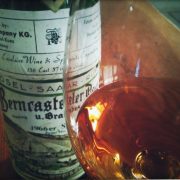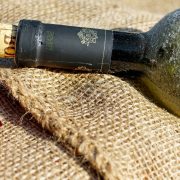A Guide to Drinking Old Wine – Part 3 – Decanting
Once opened, older wine will need to be decanted. This is done to remove the sediment which has accumulated over time. Decanting older wine is considered basic know-how for anyone in the wine industry, and is essential knowledge in the Sommelier exams. Pour the wine into a decanter or glass carafe, leaving the sediment behind. All older wines should be decanted, and reds will always have sediment. Sediment is rarer in white wines, but can be more easily seen. A slow and steady hand is needed to not agitate the sediment. It is best done over a flame or flashlight. Pour the wine staring through the bottle at the flame. A darker room will help. The sediment will become thicker towards the end of the bottle. In a restaurant setting, no sediment should be included at all, but at home you can make the judgement where to stop.
Many wines which age well, such as Bordeaux, Barolo or Tempranillo come in “shouldered” bottles. You can use this should as a catch-basin for sediment. Pinot Noir and Syrah come in a “slope -shouldered” bottle, making decanting more challenging. Expect to lose about five to ten percent in sediment.
Expect to lose about five to ten percent in sediment.
The clock is ticking once the cork has been pulled and the wine will age rapidly. In some cases, the wine will breathe its last breath and fall apart in an hour, but three to four hours is more common. Although the wine may taste thin and acidic upon first taste, an hour or two with exposure to air should give it more body and fruit. The wine may smell rancid or taste oxidized (similar to a bottle that was opened a week ago). This is not a good sign but the chance taken when opening older wine. The complexity and subtlety gained if the wine is good makes it all worth it…









